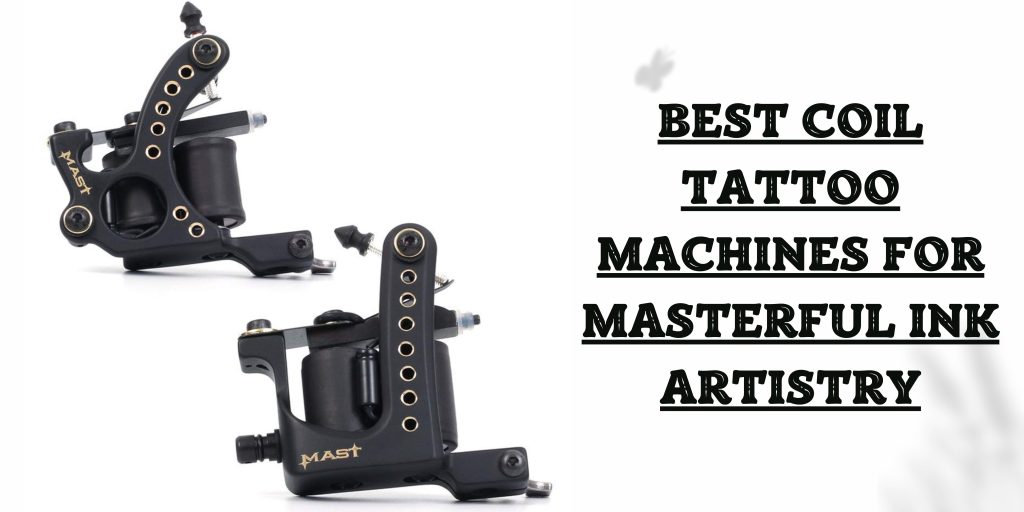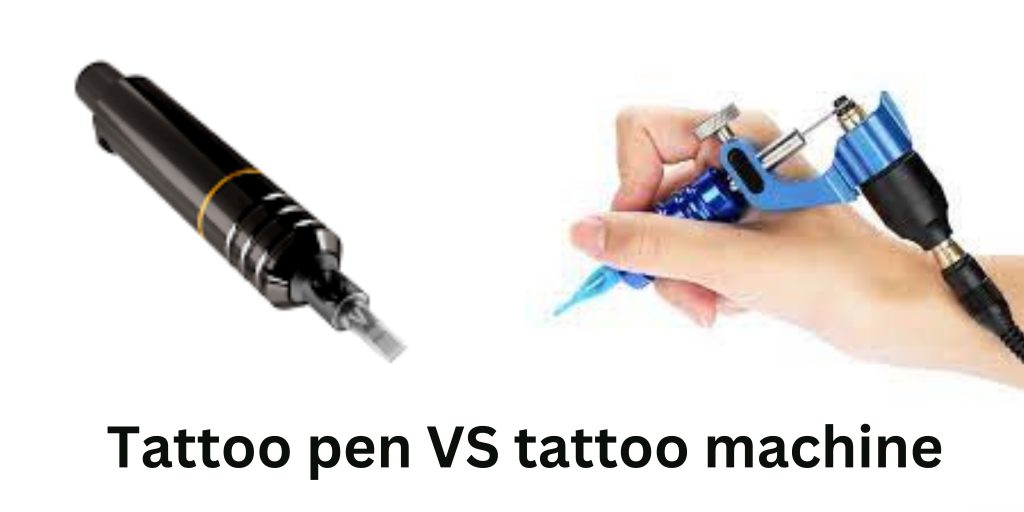In the captivating realm of tattoo artistry, innovation continues to push the boundaries of creativity. Among the advancements that have revolutionized the industry, the rotary pen tattoo machine stands tall as a cutting-edge tool, combining artistry and technology in exquisite harmony. With its sleek design, quiet operation, and remarkable precision, this remarkable device has transformed the way tattoos are created, captivating both tattoo enthusiasts and seasoned artists. In this comprehensive guide, we delve into the intricacies of what is a rotary pen tattoo machine?, exploring its origins, mechanics, advantages, and its significant impact on the world of body art.
what is a rotary pen tattoo machine?
Origins and Evolution:
The roots of the rotary pen tattoo machine can be traced back to the late 19th century when Samuel O’Reilly patented the first electric tattoo machine. Over the years, advancements in technology and design led to the development of the rotary pen tattoo machine, refining its capabilities and performance. Inspired by the mechanics of rotary engines, this remarkable device evolved to provide artists with unparalleled precision, control, and versatility.
Mechanism and Functionality:
Unlike traditional coil machines, the rotary pen tattoo machine utilizes a rotary mechanism to drive the needle up and down. A small motor housed within the pen-shaped device powers the rotary action, allowing the needle to move smoothly and consistently. This mechanism minimizes friction, vibration, and noise, resulting in a quieter and more comfortable tattooing experience for both the artist and the client.
Advantages and Benefits:
The rotary pen tattoo machine offers a plethora of advantages that have contributed to its widespread popularity among tattoo artists. Firstly, its lightweight and ergonomic design provides artists with optimal manoeuvrability, reducing hand fatigue during longer sessions. The absence of excessive vibration allows for finer, more intricate detailing, resulting in cleaner lines and smoother shading. Additionally, the low noise level creates a more relaxed atmosphere, enhancing the overall tattooing experience for both the artist and the client.
Versatility and Adaptability:
One of the remarkable features of the rotary pen tattoo machine is its adaptability to various tattooing styles and techniques. Artists can easily adjust the speed and depth of needle penetration, enabling them to achieve a wide range of effects, from precise linework to soft shading and colour packing. The versatility of the rotary pen tattoo machine empowers artists to explore their creative boundaries, giving rise to a diverse array of artistic expressions.
Maintenance and Care:
Proper maintenance and care are crucial for the longevity and optimal performance of a rotary pen tattoo machine. Regular cleaning, sterilization, and lubrication ensure hygienic and safe tattooing practices. Understanding the device’s specific requirements, such as needle compatibility, voltage settings, and replacement parts, is essential for the artist to maintain consistent results and prevent any unnecessary downtime.
what is a good rotary tattoo machine?
Choosing the best rotary tattoo machine is crucial for tattoo artists as it directly affects the quality of their work and overall experience. While preferences may vary among artists, several highly regarded rotary tattoo machines have gained recognition for their exceptional performance and reliability. Here are three examples of top-rated rotary tattoo machines:

Cheyenne Hawk Pen:
The Cheyenne Hawk Pen is a popular choice among tattoo artists due to its ergonomic design and exceptional precision. It features a powerful motor that provides consistent and smooth needle movements, resulting in clean lines and precise shading. The Hawk Pen is known for its versatility, allowing artists to work with various tattooing styles and techniques. With its lightweight and comfortable grip, it minimizes hand fatigue during long sessions, making it a favourite among professionals.
Bishop Rotary Fantom:
The Bishop Rotary Fantom is another highly regarded rotary tattoo machine known for its outstanding performance. Crafted with precision engineering, it offers artists excellent control, stability, and quiet operation. The Fantom’s lightweight and balanced design contributes to its manoeuvrability, ensuring smooth and controlled tattooing motions. It is compatible with all standard tattoo cartridges and provides artists with the flexibility to adjust the stroke length to meet their specific needs.
Stigma-Rotary® Hyper V4:
The Stigma-Rotary® Hyper V4 is renowned for its reliability and versatility. It incorporates advanced technology, including an innovative system that prevents needle backflow, ensuring consistent pigment saturation. The Hyper V4 features an adjustable give mechanism, allowing artists to fine-tune the machine’s responsiveness and achieve desired tattooing effects. With its durable construction and powerful motor, it is a trusted choice for professional tattoo artists seeking exceptional performance.
how does a rotary tattoo machine work
A rotary tattoo machine operates on a different principle than traditional coil machines. Instead of electromagnetic coils, it utilizes a rotary mechanism to create the up-and-down motion of the tattoo needle. Here’s a step-by-step breakdown of how a rotary tattoo machine works.

Motor:
The heart of the rotary tattoo machine is a small, compact motor that is housed within the machine’s body. The motor can be powered by an electrical source such as a power supply or a rechargeable battery.
Rotary Mechanism:
The motor drives a rotating mechanism inside the machine. This mechanism consists of an eccentric cam, a drive bar, and a needle bar. The eccentric cam is off-center and connected to the motor shaft. As the motor rotates, it causes the eccentric cam to move in a circular motion.
Drive Bar and Needle Bar:
The movement of the eccentric cam is transferred to the drive bar, which is connected to it. The drive bar converts the circular motion of the eccentric cam into a linear motion. This linear motion is then transmitted to the needle bar, which is attached to the drive bar.
Needle Movement:
As the drive bar moves back and forth due to the rotation of the eccentric cam, the needle bar moves up and down in a reciprocating manner. This motion drives the tattoo needle in and out of the skin, allowing the artist to create the desired tattoo design.
Needle Cartridge:
Most rotary tattoo machines are designed to be used with disposable needle cartridges. These cartridges contain the tattoo needle and are easily attached to the machine. The needle cartridges come in different configurations, allowing artists to switch between needle types and configurations for different tattooing techniques.
Adjustments:
Rotary tattoo machines often have adjustable features that allow artists to customize their tattooing experience. These may include adjustable needle protrusion, give, and speed settings, which enable artists to fine-tune the machine’s performance according to their preferences and the specific requirements of the tattoo design.
are rotary tattoo machines better?
The question of whether rotary tattoo machines are better than other types of tattoo machines, such as coil machines, is subjective and largely dependent on personal preferences and individual tattooing styles. Both types of machines have their own strengths and considerations. Here are some factors to consider when evaluating the performance of rotary tattoo machines:
| Rotary tattoo machines advantages | Coil tattoo machines advantages |
|---|---|
| Smooth and Quiet Operation: Rotary tattoo machines are known for their smooth and quiet operation. The absence of electromagnetic coils results in reduced vibration and noise compared to coil machines. This can provide a more comfortable experience for both the artist and the client during the tattooing process. | Power and Speed: Coil machines are known for their power and ability to penetrate the skin more effectively, making them suitable for bold outlines and solid colour packing. They can deliver a faster and more forceful hit compared to rotary machines. |
| Lightweight and Ergonomic Design: Rotary tattoo machines are generally lightweight and ergonomically designed, offering artists better control and reducing hand fatigue during long tattoo sessions. The compact and balanced construction of rotary machines allows for more precise movements and intricate detailing. | Traditional Aesthetics: Coil machines have a long-standing tradition in the tattoo industry and are often preferred by artists who appreciate the nostalgia and authenticity associated with using traditional equipment. |
| Versatility: Rotary machines are highly versatile and compatible with various tattooing styles and techniques. Artists can easily adjust the needle depth, and speed, and give settings, enabling them to achieve a wide range of effects, from fine lines to shading and colour packing. Some rotary machines are also compatible with different types of needle cartridges, providing further flexibility. |
Conclusion
The rotary pen tattoo machine has undeniably transformed the tattoo industry, infusing it with a new level of precision, comfort, and versatility. From its origins to its current prominence, this innovative tool has captivated artists and clients alike with its seamless blend of artistry and technology. As the tattoo art form continues to evolve, the rotary pen tattoo machine stands as a testament to human ingenuity and the pursuit of perfection. Embark on your own artistic journey and discover the limitless possibilities that unfold when creativity meets cutting-edge innovation.







